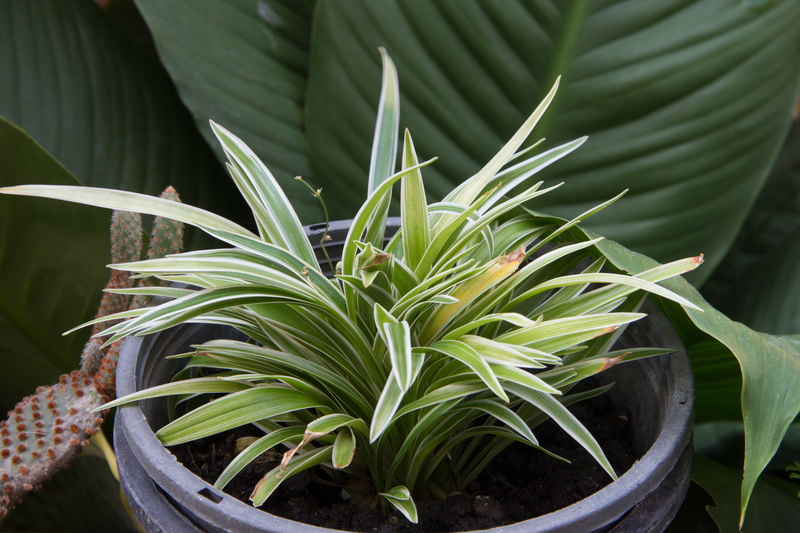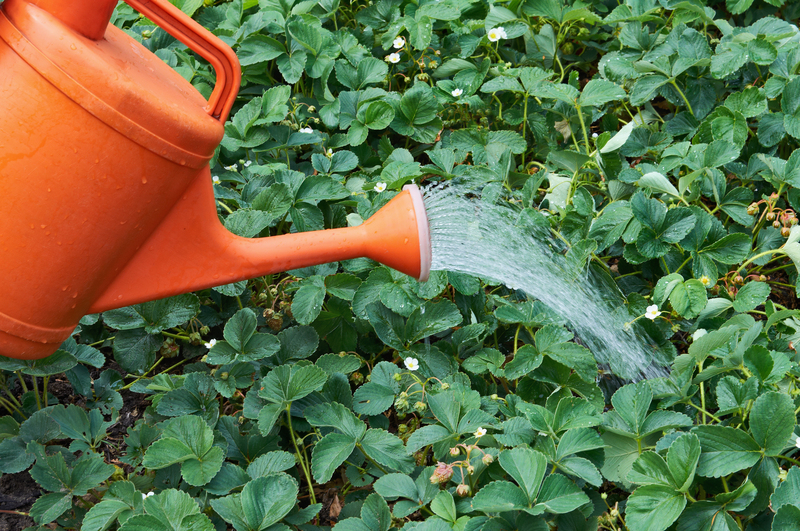The Key to Climate Change Mitigation Lies in Your Garden
Posted on 06/06/2025
The Key to Climate Change Mitigation Lies in Your Garden
Climate change is one of the most critical challenges humanity faces in the 21st century. While international agreements and governmental policies play a major role, there's a crucial, often overlooked arena where solutions can begin: your own backyard. Surprisingly, the key to climate change mitigation lies in your garden, where simple yet powerful actions have cumulative global impacts. In this comprehensive article, we will explore how you can turn your green space into a climate solution--whether large or small, urban or rural.
Understanding the Link: Gardens and Climate Resilience
Before delving into climate-smart gardening, it's vital to understand how gardens and yards fit into the United Nations' Sustainable Development Goals (SDGs) and the broader context of climate change prevention. Home landscapes are more than aesthetic retreats--they can act as mini-ecosystems to capture carbon, support biodiversity, and manage water sustainably.
The Hidden Power of Urban and Suburban Gardens
- Over 80% of the global population will live in cities by 2050.
- Urban green spaces--lawns, gardens, parks--comprise a substantial portion of city land.
- These spaces offer immense potential for mitigating climate devastation by capturing CO2, reducing heat islands, and enhancing resilience against extreme weather.
Thus, what you sow and nurture in your garden can have ripple effects, helping both your local neighborhood and the planet as a whole.

How Your Garden Can Slash Carbon Emissions
When we think about reducing carbon emissions, most people picture electric cars or wind turbines. But your garden can be a formidable weapon in the quest to mitigate carbon dioxide emissions. Here's how:
1. Soil as a Carbon Sink
Healthy soil contains billions of microorganisms and organic matter, making it one of the world's largest carbon reservoirs. Through photosynthesis, plants capture atmospheric carbon and transfer it to their roots, where it's stored in the soil.
- Compost your kitchen scraps to boost organic matter and soil fertility.
- Practice mulching to maintain soil moisture and reduce decomposition-driven emissions.
- Minimize digging to avoid releasing stored carbon.
Fun fact: If just half of U.S. lawns were replaced with native plants and compost-enriched beds, it would collectively store the same carbon as removing several million cars from the road each year!
2. Planting Trees and Shrubs
Every tree and shrub acts as a mini carbon sink, absorbing carbon dioxide and releasing clean oxygen. Native species are especially valuable, as they're adapted to local conditions and require less irrigation or fertilizer.
- Strategically plant trees where they can shade your home, reducing summer cooling needs and lowering fossil fuel consumption.
- Include a variety of woody plants, from fruit-bearing trees to evergreens and flowering bushes.
- Remember: The larger and older the plant, the more carbon it can store over its lifetime.
3. Say Goodbye to Gas-Powered Lawnmowers
Did you know that one hour of mowing with a gasoline-powered lawn mower emits as much pollution as driving a car for 300 miles?
- Switch to electric or manual reel mowers for a major emissions cut.
- Let parts of your lawn go "wild" and replace turf with flowering meadows or groundcovers.
Your Garden as a Biodiversity Refuge
Biodiversity loss and climate change are interconnected crises. A nature-friendly garden acts as a haven for pollinators, birds, and other wildlife, making it a lifeline for threatened species.
Building Habitat with Native Plants
Native plants evolved alongside local insects and animals, making them the best choice for supporting biodiversity. By diversifying your yard, you:
- Provide food and shelter for bees, butterflies, and migrating birds.
- Break the cycle of monoculture that leaves landscapes vulnerable to pests and climate stressors.
- Reduce the need for pesticides and fertilizers, cutting pollution and greenhouse gas emissions.
Creating Wildlife Corridors
In fragmented urban environments, your garden might be the critical puzzle piece connecting animal populations. Encourage neighbors to join you, forming a patchwork of pesticide-free, climate-sensible yards across your street or community.
Water Wisdom: Saving the World Drop by Drop
Water conservation is a cornerstone of both climate adaptation and mitigation. As droughts and floods become more common, how you manage water in your yard can make a big difference.
Strategies for a Climate-Smart Garden
- Rain Gardens & Bioswales: Construct low-lying gardens or shallow ditches filled with deep-rooted native plants to absorb storm runoff and recharge groundwater.
- Drip Irrigation: Use targeted watering systems to deliver precise moisture, drastically reducing waste.
- Xeriscaping: Design landscapes with drought-resistant native species, minimizing water and maintenance needs.
- Rainwater Harvesting: Collect rain from your roof in barrels to irrigate plants during dry spells.
By copying nature's water cycles, your garden can remain lush and productive during climate extremes, all while protecting local rivers and reducing energy-intensive water use.
The Power of Regenerative Gardening
Traditional industrial gardening cycles--from synthetic fertilizers to chemical pesticides and over-tilling--contribute to greenhouse gas emissions and degrade soil health. Instead, a regenerative garden flips the script, actually improving the ecosystem backbone of your yard.
Regenerative Gardening Tactics
- No-Till or Low-Till: Preserve beneficial soil structure and its carbon stocks.
- Cover Crops: Grow living mulches that fix nitrogen naturally and smother weeds without chemicals.
- Compost: Return kitchen and yard waste to the earth, building rich, spongy, carbon-sequestering soil.
- Polyculture Planting: Mimic natural plant communities, where multiple species thrive together and support each other.
Regenerative, climate-friendly gardens not only support climate change prevention, but they also nurture healthier food, restore vital habitats, and create beauty for generations.
Reduce, Reuse, Recycle--Garden Edition
It's not just what you plant, but also how you garden that matters for the planet.
- Recycle plastic pots or use biodegradable seed starting supplies.
- Repurpose old wood or upcycled materials for garden beds and fencing.
- Source local mulches and compost to cut transportation emissions.
- Prioritize organic seeds and heirloom varieties selected for your region.
Every sustainable switch in your garden toolkit is another step toward mitigating climate change at home.
Your Vegetable Patch: Local Food, Global Impact
Homegrown food is not only fresher and more nutritious; it's also a game-changer for cutting food miles and emissions. Industrial agriculture depends heavily on fossil fuels for transportation, refrigeration, pesticides, and fertilizers.
How a Home Garden Supports Climate Action
- Grows food where you live, reducing the need for long-haul shipping.
- Allows for composting of plant waste, returning nutrients and carbon to home soil.
- Encourages seasonal eating, which aligns with natural climate rhythms.
- Leaves out synthetic chemicals, which are fossil-fuel based and destabilize the climate.
If just 10% of families in a city cultivated a modest kitchen garden, it could save thousands of tons of CO2 emissions annually.
Climate Change Mitigation in Your Garden: Steps to Start
Transforming your yard into a climate-action zone doesn't necessitate drastic lifestyle changes. Here's a practical starter plan to unlock the key to climate change mitigation in your garden:
- Assess Your Soil and Conditions: Test soil health, light, and moisture before planting.
- Plan for Diversity: Choose a mix of pollinator-friendly plants, edibles, shrubs, and trees adapted to your region.
- Compost All Organics: Set up a compost bin for kitchen scraps, leaves, and grass trimmings.
- Reduce or Eliminate Lawn: Convert to meadows, wildflowers, or edible beds where possible.
- Go Organic: Refuse chemical pesticides and fertilizers.
- Capture Rainwater: Install a rain barrel or build a rain garden.
- Share and Inspire: Talk with neighbors, join local garden clubs, and swap seeds or plants to create a community-scale effect.

Frequently Asked Questions About Gardening for Climate Solutions
Can container gardens and balcony planters make a difference?
Yes! Even small-scale, potted gardens provide cooling, create pollinator habitats, and produce fresh food with low emissions. Every plant counts when it comes to climate change solutions.
What's the best approach for drought-prone areas?
Choose drought-resilient native plants, use mulch to retain soil moisture, and collect rainwater. Replace thirsty lawns with gravel, rock gardens, or xeriscapes where appropriate--this supports climate adaptation as well as mitigation.
How can kids or communities get involved?
Start a school or community garden project! Gardening offers hands-on education about environmental stewardship, climate change, and food systems. The knowledge gained today will fuel change for tomorrow.
Conclusion: Every Garden is a Climate Solution Waiting to Bloom
The key to climate change mitigation truly lies in your garden. By reimagining our backyards, patio pots, and shared green spaces as climate-action zones, we unleash the power of collective simplicity. Each compost pile, pollinator patch, native tree, or harvested tomato adds up, making your plot a part of the global solution.
Remember: You don't need a degree in environmental science or acres of land. The only requirement is the will to nurture something green, vibrant, and healthy--for yourself, for your neighbors, and for the planet. Your garden matters in the fight against climate change.
Let's dig in--and grow solutions to climate change from the ground up!
```
